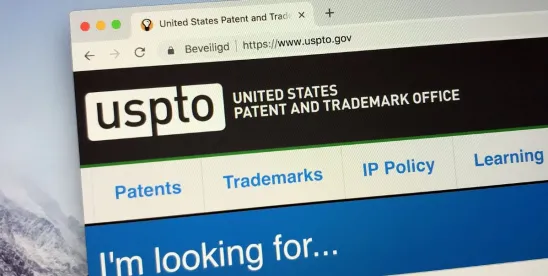The US Patent and Trademark Office (USPTO) recently issued two memoranda reshaping the Patent Trial and Appeal Board’s (PTAB) approach to discretionary denials for parallel proceedings.
First Memo: Guidance on USPTO’s Recission of Fintiv Memo
The first memo, issued on March 24 by PTAB Chief Administrative Patent Judge Scott Boalick, clarifies how discretionary denials should be handled following the USPTO’s recission of the Fintiv Memo. Going forward, the Board will once again apply the Fintiv factors to determine whether it should exercise its discretion to deny institution for any post-grant proceeding challenging a patent that has been asserted in a parallel proceeding, including in the US International Trade Commission (ITC). Those six factors include:
- Whether the court granted a stay or evidence exists that one may be granted if a proceeding is instituted.
- Proximity of the court’s trial date to the Board’s projected statutory deadline for a final written decision.
- Investment in the parallel proceeding by the court and parties.
- Overlap between issues raised in the petition and parallel proceeding.
- Whether the petitioner and the defendant in the parallel proceeding are the same party.
- Other circumstances that impact the Board’s exercise of discretion, including the merits.
The memo makes clear that no single Fintiv factor is dispositive; the Board must reach a decision by conducting a holistic Fintiv analysis that weighs all the relevant factors. That said, Sotera stipulations will remain highly relevant. The Board may also consider any record evidence concerning the proximity of the Board’s final written decision to the district court’s trial date or the ITC’s final determination target date.
Second Memo: Interim Process for PTAB Institution Decisions
The second memo, issued on March 26, put forward interim procedure for institution decisions will be bifurcated into (1) discretionary considerations and (2) non-discretionary considerations and merits. Under the new procedure, the USPTO director will now consult at least three PTAB judges to determine whether a discretionary denial of institution is appropriate. If denial is appropriate, the director will simply issue a decision stating such. If denial of institution is not appropriate, the proceeding will continue under a new three-member panel, according to the normal procedure.
The interim procedure puts forward a new briefing schedule as a matter of right in addition to the normal, existing briefing schedule. The brief seeking discretionary denial of institution from the patent owner must be filed within two months of the Notice of Filing of any post-grant petition and is limited to 14,000 words. The opposition brief must be a month later and is also limited to 14,000 words. If good cause is shown, a reply brief of 5,600 words can be filed.
The briefs can address all the relevant factors under PTAB precedent, including the above described Fintiv factors. The memo enumerates specific factors, including (1) whether the PTAB or another forum has already adjudicated the validity or patentability of the challenged patent claims, (2) whether there have been changes in the law or new judicial precedent issued since issuance of the claims that may affect patentability, (3) the strength of the unpatentability challenge, (4) the extent of the petition’s reliance on expert testimony, (5) settled expectations of the parties, such as the length of time the claims have been in force, (6) compelling economic, public health, or national security interests, and (7) any other considerations bearing on the director’s discretion. One other consideration will likely be the ability of the PTAB to meet its “workload needs.”
While the memoranda do not explicitly predict the results of the new interim procedure, a rise in discretionary denials can be expected. The combination of the bifurcation of discretionary denials and the consistency in which the ITC sets target dates ahead of the PTAB estimated final written decision increases the probability of denials. Additionally, because the briefing schedule does not replace the normal briefing schedule, there should be no expected increased efficiency for patent owners from the new bifurcation procedure. Factoring in the tight three-month briefing window, any petition for post-grant review would need to be filed within one to two months of any ITC proceeding to have a chance of avoiding discretionary denial of institution.




 />i
/>i
